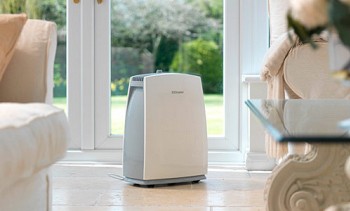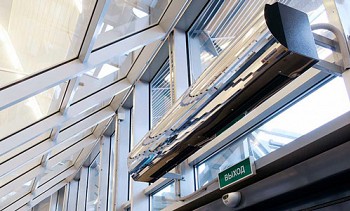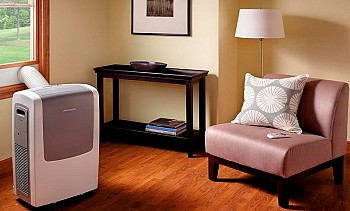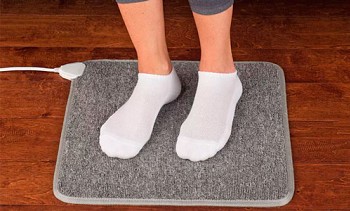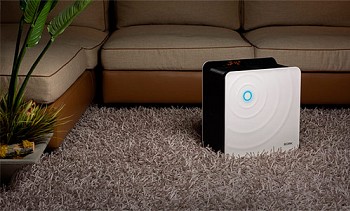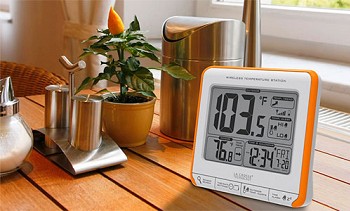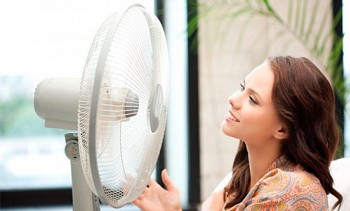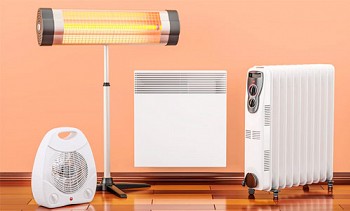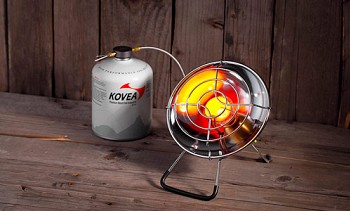Which heater to choose for an apartment or a house - pros, cons and selection criteria
With the first autumn rains and slush, the house becomes dank and uncomfortable. And when strong winter frosts strike, the cold in the apartment sometimes settles for a long time. Well, that means it's time to go to the store for a heater. Here are just too many of their varieties appeared: oil, and convection, and even infrared. Let's talk today about which heater to choose, considering the features, advantages and disadvantages of each type of appliance.
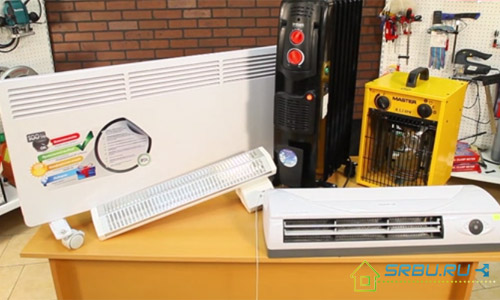
Content:
- Why are heaters used and how do they work
- Oil heaters - slowly heat up, keep warm for a long time
- Electric convectors - turn on quickly, slowly warm
- Fan heaters - inexpensive but noisy
- Infrared heaters - quiet, efficient, but expensive
- Choose a heater and make no mistakes when using it
- Comparison table of characteristics of heaters
- Video: Varieties and choice of heater
Why are heaters used and how do they work
Applied devices for heating when the heat of the heating batteries is not enough for sufficient comfort. Nobody wants to freeze, and the heat from the room leaves constantly. The colder it is in the street, the faster the precious heat disappears into the street. And three-fifths of it goes through the walls, floor and ceiling. This process is called transmission heat loss. The more doors and windows, the more significant these losses. In corner apartments, they are more significant than in those located in the middle of the building.
The remaining two fifths of the losses are called ventilation heat losses. They occur when air enters the street from the apartment and replaces part of the warm air in the rooms of the apartment. Windows and doors with gaps, a ventilation system, a duct hood are loopholes for cold street air. Therefore, it has long been customary to close windows for the winter and insulate entrance doors.
Today, there are three types of heaters on sale that have different operating principles:
1. Convection appliances heat the air and then mix it with cold.
2. Radiation with long waves allows you to warm not the air in the apartment, but the walls, floor and things in the apartment. This is how infrared heaters work.
3. Fan heaters heat the air and direct it to the right place. It creates a pleasant warm breeze.
Next, we consider in more detail each of the types of devices in order to finally find out which heater to choose for the apartment, so that it is efficient, economical, and has a reasonable price.
Oil heaters - slowly heat up, keep warm for a long time
These devices appeared massively at the end of the last century. Then they were very popular, considered the best. This device is similar to a regular cast-iron battery, but, unlike it, has mineral water inside, not water. It is heated with the help of a heating element, powered by electric current. Like the battery, this heater has several sections. The more of them, the better the heat transfer.
In oil heaters, room heating is due to convection. However, they also have wave radiation, but it is so small that it does not play any role in the operation of the device. The device should be chosen as follows: for every 10 square meters of the room, 1 kilowatt of power is required. It is a standard ceiling height of 2.7 meters. If the ceilings are higher, choose a heater more powerful. Convenient devices in which the fan heater is built-in - this allows to reduce the time of heating the room.
+ These devices please:
- low price (from 1,5 thousand rubles);
- long operating time without turning off (there is an adjustable thermostat);
- mobility - the device can be easily moved around the apartment;
- the possibility of working for some time (while the oil is still hot) with a sudden outage.
- Oil heaters also have disadvantages:
- The device is heated for almost an hour - this is a very long time.
- The dimensions of the device, as well as its weight, are quite impressive.
- Strong heating of the case (up to 70 degrees) is fraught with the danger of burns.
- These heaters are not very economical - their average power is two kilowatts.
- Due to convection, dust particles constantly rise into the air. Therefore, if you suffer from allergies to dust, deciding which heater to choose for the home, try to exclude convection-type appliances.
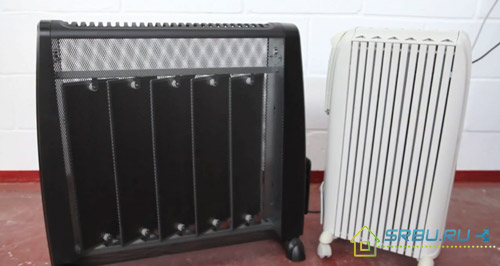
Oil heaters - on the left with a protective casing on the right open type.
Electric convectors - turn on quickly, slowly warm
As the name implies, these devices use only convection for operation, and nothing more. At the bottom of such a heater there are slots through which cold air is sucked in. Heated with the help of PETN, it becomes lighter, and then this hot air rushes up to the ceiling. The larger the area of the heating element, the correspondingly more air it can heat. Therefore, manufacturers are trying to increase this area by equipping the PETN tube with flat metal ribs.
Convectors are not as inertial as oil-type devices. They do not need an hour to warm up - only a few minutes are enough. This is because the coolant is not oil, but air itself. Due to the lack of extra parts, the convector case is thin, not more than eight and a half centimeters. Basically, such heaters are designed for wall mounting, but there are also floor models on wheels. Their power is chosen in the same way as oil devices - 1 kilowatt per 10 square meters of space.
+ Advantages of convector heaters:
- They differ in a reasonable price - from 2.5 thousand rubles.
- The case of these devices is heated no higher than 60 degrees.
- They do not make noise - this is a big plus.
- They have auto power off and auto power off, which are controlled by a thermostat.
- These heaters have built-in overheat protection.
- Disadvantages:
- Such a heater cannot warm a large room.
- The air in the room warms for a very long time - because convectors usually do not have a built-in fan.
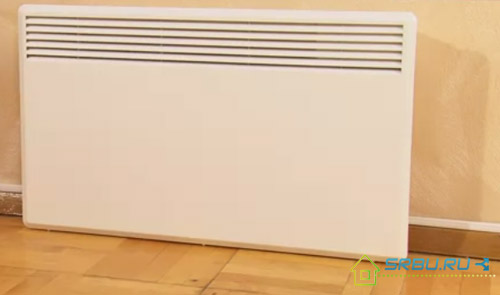
Convector type electric heater.
Fan heaters - inexpensive but noisy
These devices come in various sizes. The larger the fan blades installed inside the case, the larger the dimensions of the device. The heating air passes either through a metal spiral or through a ceramic heating element. Heat ventilation is the fastest way to raise the air temperature in a room. Turned on the device - and after half an hour the room is noticeably warmer. Moreover, enough from 1 to 1.5 kilowatts of power of such a device is already not 10, but 25 square meters of area. Those who determine which heater is better to choose in terms of the most economical solution can recommend this type of device.
+ Advantages of fan heaters:
- They are the cheapest - models with a spiral can cost 500 rubles, the price of devices with a ceramic plate starts from 1.1 thousand rubles.
- They are the most economical - they consume about 1-1.5 kilowatts of power.
- They have a thermostat, when overheating instantly turns off the device.
- They are very light and easy to carry from room to room.
- Disadvantages:
- These heaters are too noisy.
- They quickly overheat, so they cannot be used continuously for long enough.
- They raise a lot of dust.
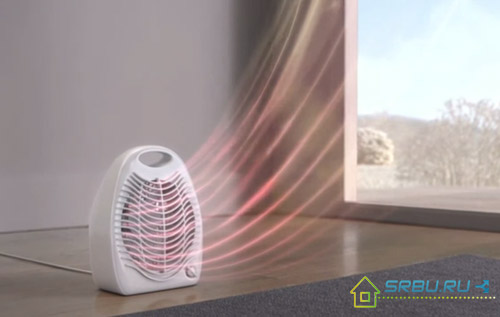
The simplest, portable fan heater.
Infrared heaters - quiet, efficient, but expensive
In these devices, inside there is a lamp (halogen, carbon or quartz) that emits long infrared waves. Since our eyes do not see this part of the spectrum, the heater works for us imperceptibly. However, the radiation does its job, and all objects in the room heat up. This is the floor, furniture, walls, and if a person is on the path of the waves, his body is also heated.Therefore, you should not be in this way for a long time - you can overheat.
These devices are produced in floor, wall and ceiling versions. Sometimes they are installed not only in the room, but also on the terrace or balcony. In this case, power is taken 1 kilowatt per 10 square meters. And inside the apartment you need already 1.5 kilowatts for the same area.
+ Advantages of infrared devices:
- They work completely silently, without raising a speck of dust into the air.
- When using them, the air temperature is very quickly equalized throughout the volume of the room - after all, all planes are heated simultaneously.
- As soon as you turn on the appliance, it immediately begins to warm the room. When turned off, it instantly cools down.
- Disadvantages:
- These heaters are more expensive than everyone else - they cost at least 2.5 thousand rubles.
- Only objects in the radiation zone are heated.
- A person can not be under infrared rays for a long time - this causes the body to overheat.
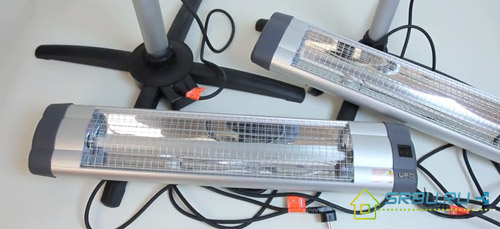
Quartz infrared electric heaters.
Choose a heater and make no mistakes when using it
1. Remember once and for all: no matter what the sellers say, praising the beautiful models of heaters that do not dry the air, this can not be. As well as models that do not burn oxygen or have an efficiency close to 100 percent. All this is advertising nonsense. If any heater (even infrared) will increase the air dryness in the room, then not a single one will burn oxygen - after all, these are electrical appliances, and there can be no open fire in them. And the efficiency of all types of devices is very high and approaches 100 percent. Like this.
2. Therefore, the choice of a heater should be based on the area that needs to be heated. The most important parameter depends on this - the power of the device.
3. Naturally, you need to look at which room needs heating. Perhaps this is a nursery, and you need to choose a device with a protective cover. In dusty rooms it is better to use an infrared device, and where it is wet - a heater in the housing with protection from water.
4. Be sure to check for a certification stamp to work on Russian power grids. Do not take too powerful a device to heat a small room - it will overheat.
5. Of course, it is better to buy a model of a well-known brand from a manufacturer that has long been familiar to consumers. It is worth paying more, but to purchase quality goods. Cheap devices and will not last long, and can be dangerous. After all, they often do not have protection against overheating. And it can cause a fire. Yes, and cheap materials will not do a good job: ferrous metal will rust, and a material such as abc-plastic is very fragile and will smell unpleasant when heated.
Now some tips for use:
- Connect the heater to a separate outlet. In no case do not plug the plugs of two such devices into one outlet - a short circuit may occur due to possible melting of the wires.
- Whatever type of heater, it should be farther than half a meter from any of the objects in the room.
- Never place the device under the window, because its body is often very hot, and as a result, curtains can catch fire.
- Do not dry wet things on the radiator - they will close the ventilation slots, the heater will quickly overheat, which is fraught with big troubles.
Comparison table of characteristics of heaters
| Parameters | Oil heaters | Electric convectors | Heat fans | Infrared heaters |
|---|---|---|---|---|
| Noisiness | Low | Low | High | Low |
| Cost-effectiveness | Low | Average | High | Average |
| Warming speed | Small | Very little | Average | Fast |
| Human exposure | Convection raises dust a little | Convection raises dust a little | Strongly raises dust | For a long time is strongly exposed to infrared rays is prohibited |
| Mobility | Average | Average | High | Model dependent |
| Price | Average | Big | Low | Big |
Video: Varieties and choice of heater

